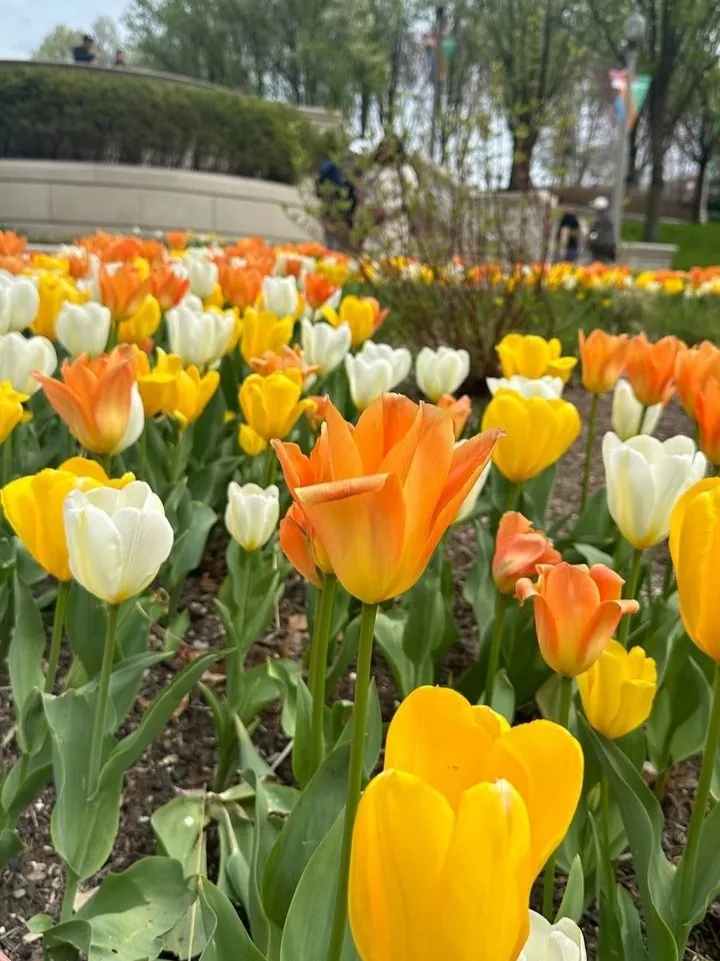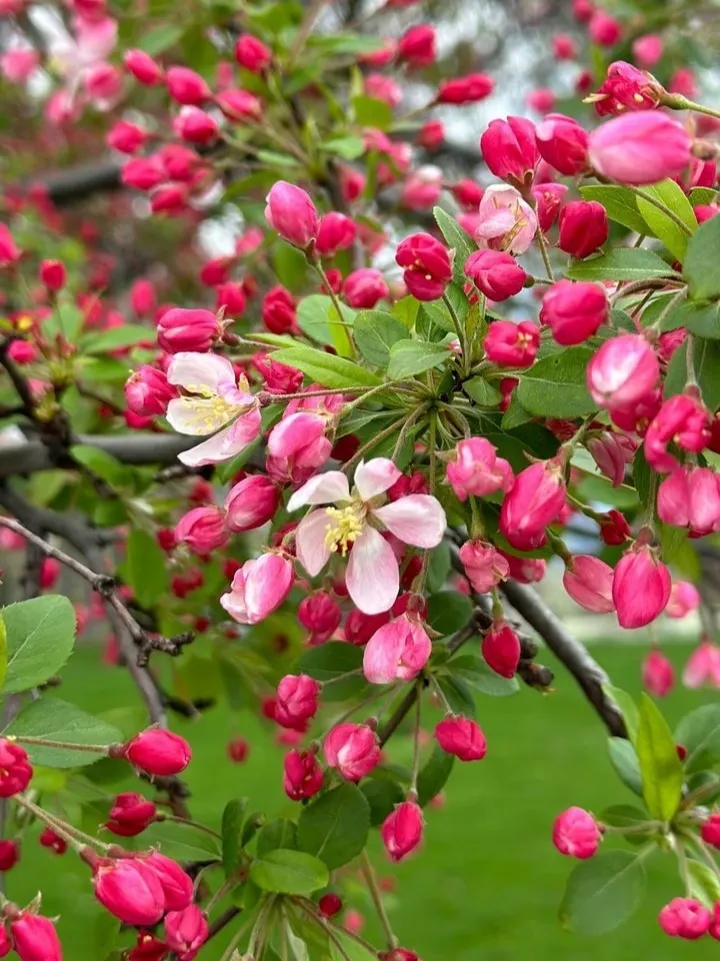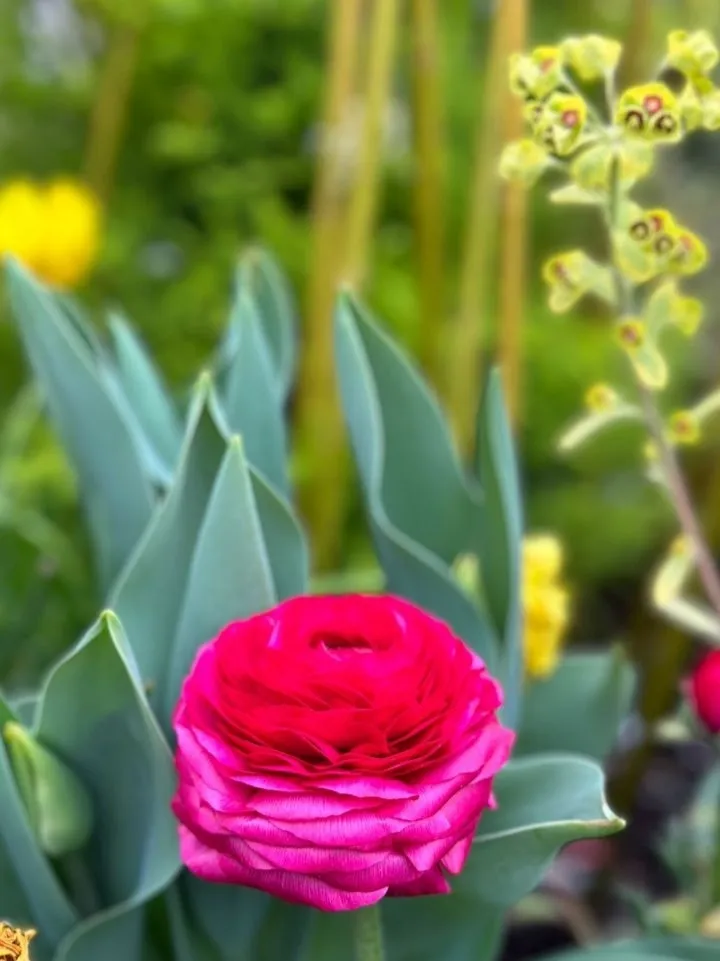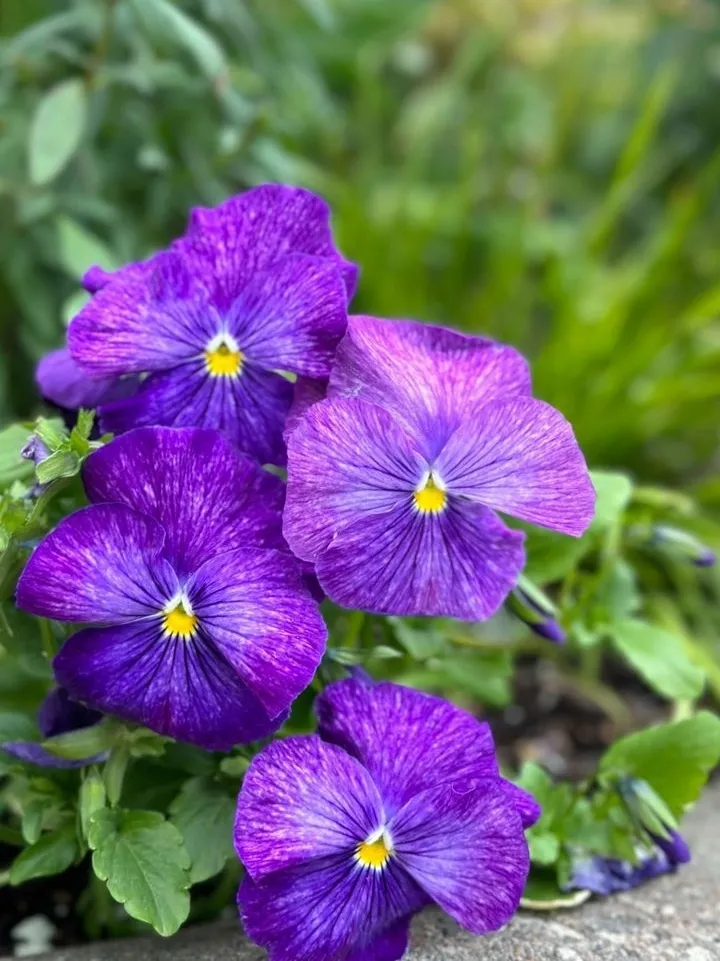The summer season is just started and the flowers are blooming really very beautifully. Today i went to the garden and saw these beautiful flowers and my heart got amazed. The beauty of nature shows its best colours in the form of flowers. The creation of flowers is just amazing and today as i went to the garden i was really amazed after seeing those beautiful flowers which just shoked me. In nature everything is different be they in varities, colours, and by their uniqueness and details which is added to them.
This summer the gardener has planted the plants really well and they variety is also really amazing. I was also thinking to plant some of the flowers somewhere outside in any of the garden and complete the task given by my school as detailing upon various topics in the Nature was the theme of this summer homework.
The difference types of flowers have different speciality and details so lets have a look at all of them and know more about them. The first one is Tulipa greigii which typically grows 8–12 in (20–30 cm) tall, they have single flowers with a bowl-like shape, blooming in early to mid-spring. They also have spotted and striped leaves and the flowers are they are about ,upto 4 in (102 mm) wide. The blooms are more limited in colour shades than with other tulips, ranging from red and yellow to white. It is specially known for its variegated green and purple-maroon leaves. Its cultivars 'Oratorio', 'Plaisir', 'Red Riding Hood' and 'United States' have gained the Royal Horticultural Society's Award of Garden Merit. It was also featured on a Soviet postage stamp in the year 1960. The Latin specific epithet greigi honors the Russian Samuel Greig,(1735-1788), "Father of the Russian navy") due to Greig once being president of the Russian Horticultural Society.


Next is the Malus floribunda.Malus floribunda is also known by its another name and that is Japanese flowering crabapple, Japanese crab, purple chokeberry, or showy crabapple. It generally originates from Japan and East Asia. It may be a hybrid of M. toringo with M. baccata, in which case it would be written as Malus × floribunda. It is a dense, broad-spreading, deciduous tree which typically grows for about 15-25' tall and upto 18-30' wide. Red buds open in spring to fragrant, pale pink flowers (1.25" diameter) which mature to white. The flowers of this Malus hupehensis hybrid are bright magenta-pink to red. 16 '22 Broadly spreading Dark purple-red, glossy Magenta-pink to red Deep red, 1/2" Excel. The fruits are also referred for treating many other indefinite symptoms such as fever and headache and for the skin (wounds and sunburns) in external use.

The next flower is Persian buttercup. The scientific name of persian buttercup is Ranunculus asiaticus. Its is a species of buttercup native to the regions of eastern Mediterranean region, southwestern Asia, southeastern Europe, and northeastern Africa. It is a herbaceous perennial plant growing up to 45 cm tall, with simple or branched stems. The Persian buttercup (Ranunculus asiaticus) is one of the most popular species for gardening. Habit and Size: Ranunculus asiaticus is a tuberous perennial with a compact growth habit which, typically grows for about 12-24 tall i.e. (30-60 cm). It grows from bulb-like corms that are easy to find in nurseries and catalogs. We should also take care about Fresh buttercup is LIKELY UNSAFE when taken by mouth. It can cause severe irritation of the digestive tract, abdominal pain, vomiting, and diarrhea. They are mainly used to devote love in form of bouquets.


The next one is Pansy.Pansies are Viola hybrids, and have a scientific name as Viola x wittrockiana, with a complex ancestry that includes several species. They're short-lived perennials but are used as annuals most commonly. Similar to pansies and offered in garden centers at the same time are Johnny jump-ups and Viola “Jackanapes”. Pansies are typically grown as annuals, which means they complete their life cycle within one growing season. However, in some milder climates, pansies may act as short-lived perennials and return for a second year, especially if they're protected from extreme temperatures.

Coming across these varieties of flowers was amazing. The time was well spent in the garden and i really enjoyed being in the nature and enjoying the colours, varities and details about some of the flowers in the garden. Actually to be honest is was really very hot that i was feeling really very hot and the hot air was irritating my skin so this was all that i could cover for today. I would loved to visit the garden again and explore rest of the flowers on a windy day to enjoy the weather and garden hard.